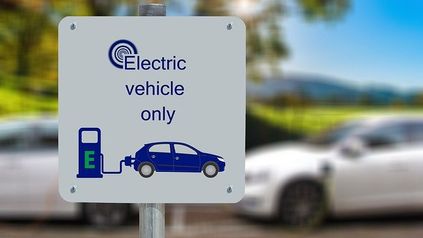For centuries, three tribes have raised goats native to the beautiful Changthang plateau in Northern India. These tribes are a fundamental part of the history of the region of Ladakh and the goats are the only ones in the world which produce pashmina wool, the most prized and expensive type of cashmere. As a result of rising temperatures: there is no longer grass on the mountain for the goats to eat; the rain no longer follows its centuries old patterns; and many of the younger tribes people are having to choose a life in the cities.
The threat to such important history and stunning landscape is a small example of the importance of tackling climate change for India. The 2022 Union budget suggests that India has the desire to meet this challenge, particularly if the sovereign green bonds are as effective as hoped. In November, at COP26, Narendra Modi made a number of key pledges including a five-fold commitment in respect of India's climate targets, which he referred to as Panchamrit (a reference to a holy drink made with five ingredients):
500 GW non-fossil fuel electricity capacity by 2030
The Central Electricity Authority estimates that India's total capacity in 2030 will reach 817GW. This would mean that nearly two thirds of installed capacity would be non-fossil fuel based. To achieve this so soon would be an incredible achievement and is ambitious. However, India has a rich abundance of natural resources which it can utilise and it has been said that more than half of the 500GW will be generated by solar and wind.
50% electrical energy requirement from renewable energy by 2030
India currently meets approximately 20% of its electrical energy requirement from renewable energy. A jump to 50% will require significant investment to create and store the electricity generated. Nevertheless, as above, India has the natural resources to be able to harness solar, wind, and hydroelectric power. India would benefit from clever investment and the implementation of carbon-free electricity standards to decarbonise the economy.
1 billion tonnes cut in cumulative emissions by 2030
This is the first time India has expressed an absolute emissions reduction target. It is debatable what this target truly means: whether there will be a 1 billion tonne cut to current emission (i.e. 3.3 billion tonnes in 2021 down to 2.3 billion tonnes in 2030); or if there will be a 1 billion tonne cut to future emissions (i.e. expected 1.3 billion tonne increase reduced to 0.3 billion tonnes). Even the latter is positive step and can be achieved with the appropriate assistance provided to each industry and households.
45% lower emissions intensity of GDP by 2030
Emission intensity measures the volume of emissions per unit of GDP. Reducing emissions means that less pollution is being created per GDP but this index does have its flaws: as GDP grows, total emissions can follow and the figure remains unchanged. That said, India first set a goal of 33% in 2005 but now the target has become more ambitious and the reports generally are that there has been a steady drop since 2005.
Net zero by 2070
This is an extremely ambitious target and beyond a fair contribution to global efforts to stay within 1.5 degrees of warming. It will require battling against emissions generated across all industries, including agriculture and land use.
For the world generally, these targets are very exciting and offer some genuine hope in the fight against climate change. Here at Howard Kennedy we heartily support such ambitious goals and seek to assist clients in making them a reality. Much of the work undertaken by the firm has an ESG positive outcome and it is our hope that we can assist Indian businesses striving towards the five-fold commitment set out above.




